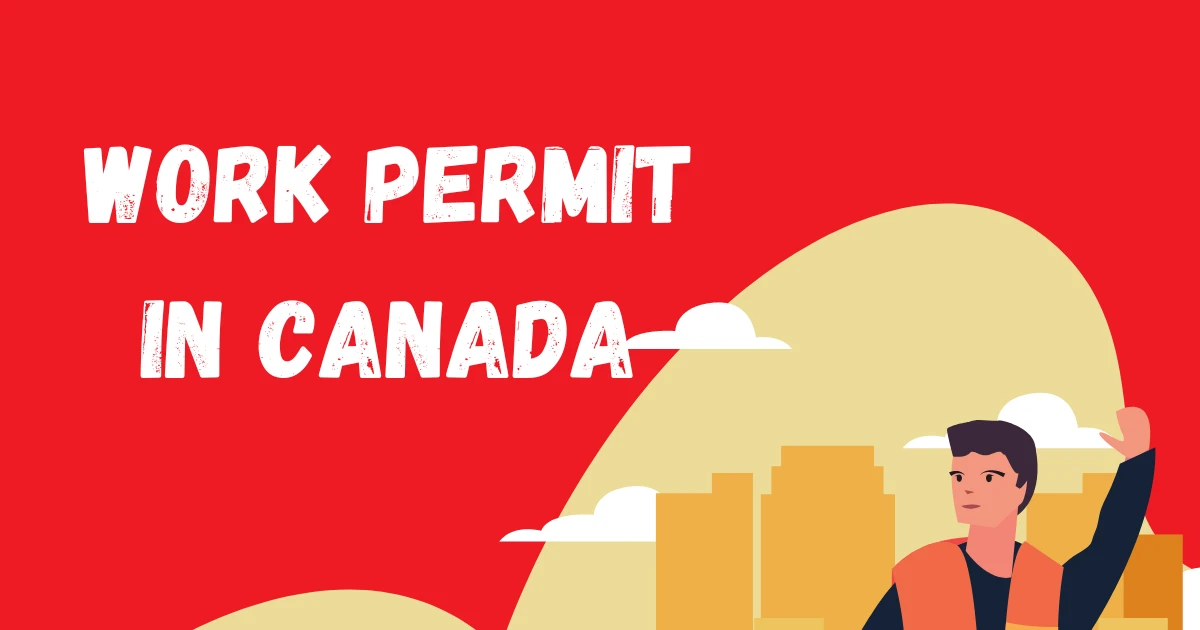Understanding the Canadian Work Permit System – Guide for New Immigrants

Understanding the Canadian Work Permit System is a crucial step for anyone planning to work in Canada legally and build a long-term life in the country. Canada offers a variety of work permits designed to allow foreign nationals to contribute to the workforce while complying with immigration regulations. Whether you are a skilled professional, a temporary worker, or an international student seeking practical experience, understanding how the system works can help you plan your career and eventual settlement in Canada effectively. This comprehensive guide walks you through everything you need to know, including types of work permits, eligibility, application processes, rights and responsibilities, and pathways to permanent residency.
What is a Canadian Work Permit?
A Canadian work permit is an official authorization that allows foreign nationals to work in Canada for a specific employer, location, or period. It is not the same as permanent residency, but in some cases, work permits can lead to permanent status. There are two main categories of work permits in Canada: employer-specific permits and open work permits. An employer-specific permit limits your employment to a designated employer, while an open work permit allows you to work for almost any employer in Canada. Understanding these types is essential because it determines your flexibility, job security, and future opportunities in the country.
Employer-Specific Work Permits
Employer-specific work permits are tied to a particular job offer in Canada. Before such a permit is issued, a Labor Market Impact Assessment is usually required. This assessment demonstrates that no Canadian citizen or permanent resident is available to perform the job, ensuring that the employment of a foreign worker does not negatively affect the local labor market. Positions that commonly require employer-specific permits include skilled trades, healthcare roles, technology positions, and certain managerial jobs. With an employer-specific permit, you can only work for the designated employer, which makes maintaining the relationship with your employer vital. Changing jobs typically requires a new permit, which should be applied for before leaving your current position.
Open Work Permits
Open work permits provide greater flexibility. They are not tied to a specific employer, allowing you to explore different employment opportunities throughout Canada. These permits are often granted to spouses or common-law partners of skilled workers, international students who have graduated, and participants in programs such as the International Experience Canada initiative. Open work permits are particularly beneficial for newcomers who wish to explore various sectors, gain broad experience, or transition into permanent residency. By having the freedom to choose employers, open permit holders can leverage their work experience to enhance career prospects and personal growth.
Eligibility for Canadian Work Permit
Eligibility depends on multiple factors, including the type of permit, your job offer, qualifications, and immigration status. Skilled workers often require a valid job offer backed by a Labor Market Impact Assessment. Students may qualify for permits allowing part-time work during studies and full-time work during academic breaks. Temporary foreign workers typically need employer sponsorship. Additional requirements include demonstrating health, security, and financial stability to ensure that applicants can support themselves during their stay. Applicants should familiarize themselves with the Canada Visa Requirements guide to ensure they meet all eligibility criteria.
Applying for a Work Permit
Applying for a Canadian work permit begins with determining which category applies to you and preparing the required documentation. Key documents include a valid passport, a job offer letter, proof of qualifications, and, if necessary, a Labor Market Impact Assessment. The application can be completed online through the official Canadian immigration website or at a visa application center abroad, depending on your location. Accuracy and completeness are critical to prevent delays or refusals. The process also involves providing biometrics, paying application fees, and sometimes attending an interview. Understanding the step-by-step process is essential, and resources like the How to Apply for a Canadian Study Permit guide or the Canada Express Entry Program Visa guide can provide practical insights.
Maintaining Compliance with Work Permit Conditions
Once you have your work permit, it is essential to comply with its conditions. Employer-specific permits restrict employment to the designated employer, job title, and location. Violating these conditions can lead to penalties, permit revocation, or even deportation. Maintaining compliance involves working the allowed hours, keeping your immigration status valid, and renewing your permit on time. Staying informed about your obligations ensures a smooth work experience and lays the foundation for potential permanent residency applications.
Extending or Changing a Work Permit
Work permits are usually valid for a set period. If you wish to continue working in Canada beyond that period, you must apply for an extension before your current permit expires. Employer-specific permit holders changing jobs also need to apply for a new permit. Planning ahead and understanding the extension and transfer processes is critical to ensure uninterrupted employment. Many temporary workers use this experience to qualify for programs like the Canadian Experience Class, turning temporary work into a pathway for permanent residency. Guides such as the Canada Provincial Nominee Program Visa provide insight into how work experience can support long-term settlement.
Pathways from Work Permit to Permanent Residency
Canadian work experience is a valuable stepping stone to permanent residency. Programs like the Canadian Experience Class allow skilled workers with Canadian work experience to apply for permanent residency. Provincial nominee programs may also provide pathways for those contributing to the local labor market. Similarly, holding a work permit after studying in Canada can enhance eligibility for permanent residency. Understanding these options helps foreign workers strategically plan their careers and maximize the benefits of temporary employment. Resources such as the Residing in Canada Permanently guide offer detailed information on transitioning from a work permit to long-term residency.
Rights and Responsibilities of Canadian Work Permits System And Holders
Work permit holders in Canada have both rights and responsibilities. Employees are entitled to fair treatment, safe working conditions, proper remuneration, and protection from workplace discrimination. At the same time, workers must adhere to the terms of their permit, maintain legal status, and comply with Canadian laws. Awareness of these rights and responsibilities ensures that immigrants are protected while staying compliant, ultimately contributing to a productive and fulfilling work experience. Guides like the Canada Skilled and Unskilled Worker Visa provide additional insights into job regulations and labor rights.
Practical Ways for Success in the Canadian Workforce
To maximize the benefits of a work permit, newcomers should focus on skill development, adaptability, and networking. Learning workplace etiquette, improving English or French language proficiency, and understanding Canadian business culture are essential. Networking with colleagues and industry professionals can open doors to better positions and future opportunities. For example, starting with entry-level positions as outlined in Jobs In Canada For Immigrants can help you understand workplace norms, gain references, and gradually move into higher-paying roles. Actively engaging in professional communities, attending workshops, and building a reputation for reliability can significantly boost career prospects.
Exploring Study and Work Integration
For international students, work permits can complement educational experiences. The Canada Student Visa allows students to study while gaining part-time work experience. After graduation, students can transition to a work permit under the Post-Graduation Work Permit Program. This integration of study and work provides practical experience, networking opportunities, and a pathway to permanent residency. Guides like How to Apply for a Canadian Study Permit provide critical steps for planning this journey effectively.
Family Sponsorship and Canadian Work Permit System
Family sponsorship programs can also intersect with work permits. Spouses of skilled workers may qualify for open work permits, allowing them to work while residing in Canada. Family reunification ensures that immigration is not just about employment but also about building a life with loved ones. The Family Sponsorship in Canada guide explains eligibility, documentation, and timelines, making it easier for newcomers to understand the options available for family members.
Financial Planning for Work Permit Holders
Financial preparation is essential for newcomers on a work permit. Understanding the cost of living, banking systems, taxes, and housing expenses allows immigrants to plan effectively. Guides like The True Cost of Living in Canada for New Immigrants provide detailed insights into expenses such as utilities, transportation, healthcare, and groceries. Careful financial management ensures that newcomers can focus on career growth and integration rather than unexpected financial stress.
Living and Thriving in Canada
Work permit holders need to adapt to Canadian life to succeed professionally and personally. Understanding cultural norms, engaging with local communities, and building social networks enhance both personal fulfillment and career opportunities. Integration involves embracing Canadian culture while maintaining ties to your own heritage. Participating in community events, volunteering, and joining professional organizations can significantly improve social and professional networks.
Conclusion
Understanding the Canadian work permit system is vital for anyone seeking to work in Canada legally and successfully. From employer-specific permits to open work permits, each type offers unique benefits and challenges. Navigating eligibility, application processes, compliance, and career planning ensures that newcomers can make the most of their Canadian experience.
By strategically combining work permits with study opportunities, family sponsorship, and provincial nominee programs, immigrants can transition from temporary employment to permanent residency.
Guides like Canada Express Entry Program Visa, Canada Provincial Nominee Program Visa, Jobs In Canada For Immigrants, How to Apply for a Canadian Study Permit, Family Sponsorship in Canada, Residing in Canada Permanently, and The True Cost of Living in Canada for New Immigrants provide valuable resources for informed decision-making. With careful planning, adaptability, and persistence, a Canadian work permit can open the door to a rewarding career, long-term stability, and a fulfilling life in one of the most welcoming countries in the world.













